A Parent's Guide to Understanding and Preventing Sports Injuries and sports injury rates 2021
Apr 7, 2023
by Christopher windbigler
A Parent's Guide to Understanding and Preventing Sports Injuries and sports injury rates 2021
Common Type of Injury by Sport among Adults and Youth Sports injuries
As parents, we want our children to be active and healthy, and participating in sports and recreational activities is a fantastic way to achieve this. However, there is always the risk of injury when engaging in physical activities or playing sports. To help you understand and prevent serious sports and recreational injuries in your children, Stanford Children's Health is here to provide insight into sports and recreational injuries, injury statistics, risk factors, and preventative measures you can take to keep your young athletes safe.
-
The Scope of Sports Injuries in Children
According to the Centers for Disease Control and Prevention (CDC), more than 2.6 million children aged 0-19 are treated in emergency departments for sports and recreation-related injuries yearly. Of course, injuries from sports are a part of any sport, even sports medicine, but knowing the statistics of injuries reported by sports can help parents make informed decisions about their children's involvement in organized sports and take appropriate safety precautions.
-
Common Sports Injuries in Children
Some the acute injuries, the most frequent where injuries occur, most common where injuries occur, and sports injuries in children include:
-
-
Sprains and strains: These injuries involve the overstretching or tearing of ligaments (sprains), muscles, and tendons (strains). They often occur in sports that involve running, jumping, and sudden changes in direction.
-
Growth plate injuries: Growth plates are areas of developing cartilage in children's bones, and they are more susceptible to injury than mature bone. These injuries can result from falls, overuse, or direct trauma.
-
Repetitive motion injuries: Also known as overuse injuries, these occur when an athlete performs the same motion repeatedly, resulting in stress and damage to muscles, tendons, or bones. Examples include stress fractures and tendinitis.
-
Concussions: A concussion is a type of traumatic brain injury that can occur from a blow to the head or a violent shaking of the head and upper body. Concussions are common in contact sports like football, soccer, and ice hockey.
-
Fractures: Broken bones can occur from falls, collisions, or overuse. Some common examples in youth sports include wrist, forearm, and collarbone fractures.
-
Contusions (bruises): These injuries occur when a direct blow or impact causes blood vessels to rupture and blood to pool under the skin, resulting in a bruise. Contusions are common in contact sports and can vary in severity.
-
Dislocations: A dislocation occurs when a bone slips out of its normal position in a joint. Commonly dislocated joints in youth sports include fingers, shoulders, and kneecaps.
-
Ligament injuries: Injuries to ligaments, such as anterior cruciate ligament (ACL) tears, can result from sudden stops, changes in direction, or direct impacts. ACL injuries are particularly common in sports like basketball, soccer, and skiing.
-
Ankle sprains: Ankle sprains occur when the ankle is forced to move beyond its normal range of motion, causing ligaments to stretch or tear. They are common in sports like basketball, soccer, and gymnastics.
-
Shin splints: Also known as medial tibial stress syndrome, shin splints are caused by inflammation of the muscles and tendons surrounding the shinbone. They often result from overuse or repetitive stress on the lower leg and are common in running and jumping sports.
Shocking High School Sports Injury Statistics
More than 7 billion school-age students have been fighting for and trying to secure their school title. Most students who dream of playing pro can sometimes push themselves too hard. This logic may explain some alarming facts about injury rates among young American athletes:
-
-
Risk Factors for Sports Injuries
Certain factors can increase a child professional sports athlete's risk of sustaining a sports injury, including a number of sports-related injuries:
-
Age: As children grow and develop, their risk of injury may change. Younger children are more likely to experience injuries due to falls, while older children may be at a higher risk for overuse injuries as they become more involved in competitive sports.
-
Lack of proper training and conditioning: Athletes who are not adequately trained or conditioned are more likely to sustain an injury.
-
Inadequate equipment or protective gear: Wearing ill-fitting or improperly maintained equipment can increase the risk of injury.
-
Preventing Sports Injuries in Your Child
As a parent, you can help minimize the risk of injury in line up by taking the following steps:
-
Encourage your child to participate in a variety of sports and activities, which can help prevent overuse injuries.
-
Ensure that your child receives proper training and coaching in their chosen sport. This includes learning correct techniques and participating in appropriate strength and conditioning programs.
-
Make sure your child uses adequately fitted and well-maintained equipment and protective gear. Consult with a coach or sports equipment professional to ensure the best fit.
-
Encourage regular communication with your child about any pain or discomfort they may be experiencing. This will help you identify potential issues early and seek appropriate medical care if necessary.
-
Teach your child about the importance of rest and recovery. Incorporate rest days into their training schedule and ensure they get enough sleep.
-
Recognizing and Responding to Injuries
If your child does experience an injury, it's essential to recognize the signs and respond appropriately:
-
Watch for symptoms such as pain, swelling, limited mobility, or visible deformity.
-
If you suspect an injury, have your child stop the activity immediately to prevent further damage.
-
Seek medical attention for severe or persistent symptoms, or if you are unsure about the severity of the injury.
-
Follow the RICE method for minor injuries: Rest, Ice, Compression, and Elevation.
-
Encourage your child to return to their sport gradually and under the guidance of a healthcare professional, once they have fully recovered.
-
Proactive Strategies for Athletes to Prevent Injuries
Understanding the risk factors and statistics surrounding sports injuries is essential, but it's also crucial to equip young athletes with the knowledge and tools to prevent injuries in the first place. Here are several strategies athletes can implement to reduce the risk of injuries:
A. Proper Training and Conditioning
Consistent and age-appropriate training programs can help build strength, endurance, and flexibility, reducing the likelihood of injuries. These programs should include a mix of aerobic exercise, strength training, and sport-specific drills to optimize performance and minimize injury risk.
B. Stretching and Warm-Ups
A warm-up prepares the body for exercise by gradually increasing heart rate, blood flow, and muscle temperature. This process helps to enhance muscle elasticity, reduce muscle stiffness, and improve overall performance. Additionally, warm-ups can help mentally prepare athletes for their training or competition.
B. Warm-Up Exercises
A well-rounded warm-up routine should include light cardiovascular exercises and dynamic stretches. Here are some examples:
-
Light Cardiovascular Exercises:
-
Jogging: A light jog for 5-10 minutes can help increase heart rate and blood flow to the muscles.
-
Jumping jacks: Perform 2-3 sets of 10-15 jumping jacks to activate various muscle groups.
-
High knees: Run in place while lifting your knees as high as possible for 30-60 seconds.
-
Dynamic Stretches:
-
Leg swings: Stand next to a wall for support and swing one leg forward and backward, gradually increasing the range of motion. Perform 10-15 swings per leg.
-
Arm circles: Extend your arms to the sides and perform small to large circular motions, both forward and backward. Do 10-15 circles in each direction.
-
Hip circles: Place your hands on your hips and rotate them in a circular motion, both clockwise and counterclockwise, for 10-15 repetitions in each direction.
C. The Importance of Stretching
Stretching is essential for maintaining and improving flexibility, which can help prevent injuries by allowing a greater range of motion during physical activities. Stretching can also aid in post-exercise recovery by reducing muscle soreness and promoting relaxation.
D. Stretching Techniques
There are two primary types of stretching: static and dynamic. Static stretches involve holding a position for an extended period, while dynamic stretches involve controlled movements that gently take the muscles through their full range of motion. As mentioned earlier, dynamic stretches should be included in the warm-up routine, while static stretches are better suited for post-exercise cooldowns.
-
Static Stretches:
-
Hamstring stretch: Sit on the ground with one leg extended and the other leg bent with the foot against the inner thigh of the extended leg. Reach for the toes of the extended leg and hold for 15-30 seconds. Repeat on the other side.
-
Quadriceps stretch: Stand and hold onto a wall or sturdy object for balance. Grab your ankle and gently pull your heel toward your buttocks, keeping your knees close together. Hold for 15-30 seconds and switch legs.
-
Calf stretch: Stand facing a wall with one foot in front of the other. Keep the back leg straight and press the heel into the ground while leaning forward. Hold for 15-30 seconds and switch legs.
C. Trigger Point Therapy
Trigger point therapy is a manual therapy technique that targets tight muscle knots, known as trigger points. These knots form when muscle fibers contract and fail to release, causing pain, stiffness, and reduced range of motion. By applying targeted pressure to these trigger points, athletes can alleviate pain, improve mobility, and restore muscle function.
-
Benefits of Trigger Point Therapy for Youth Athletes
-
Reduces muscle pain and tension
-
Increases flexibility and range of motion
-
Promotes muscle recovery and reduces the risk of injury
-
Addresses muscle imbalances and improves overall performance
-
Step-by-Step Guide to Trigger Point Therapy
Trigger point therapy can be performed using a foam roller, massage ball, or even one's own hands. Here's a step-by-step guide on how to perform trigger point therapy on various parts of the body:
A. Upper Back and Shoulders
-
Place a foam roller or massage ball against a wall at shoulder height.
-
Lean against the roller or ball with your upper back and shoulders.
-
Apply gentle pressure and slowly move side to side, pausing on any tight spots for 20-30 seconds.
B. Lower Back
-
Sit on the ground and place a foam roller or massage ball under your lower back.
-
Cross your arms over your chest and lean back onto the roller or ball.
-
Move your body up and down, applying pressure to tight spots for 20-30 seconds.
C. Hamstrings
-
Sit on the ground with one leg extended and the other leg bent.
-
Place a foam roller or massage ball under the extended leg's hamstring.
-
Apply pressure by leaning your body weight onto the roller or ball and slowly roll along the length of the muscle, pausing on any tight spots for 20-30 seconds.
D. Quadriceps
-
Lie face down with a foam roller or massage ball under one thigh.
-
Support your body weight with your elbows and the opposite leg's toes.
-
Slowly roll along the length of the quadriceps, pausing on any tight spots for 20-30 seconds.
E. Calves
-
Sit on the ground with one leg extended and the other leg crossed over the ankle of the extended leg.
-
Place a foam roller or massage ball under the extended leg's calf.
-
Apply pressure by leaning your body weight onto the roller or ball and slowly roll along the length of the muscle, pausing on any tight spots for 20-30 seconds.
-
Tips for Successful Trigger Point Therapy
-
Start with light pressure and gradually increase as needed.
-
Breathe deeply and try to relax during the process.
-
Spend 20-30 seconds on each trigger point before moving on.
-
Perform trigger point therapy 2-3 times a week, or as recommended by a healthcare professional.
-
Here is video i created using simple lacrosse ball and roller. In less than 5 minutes you can feel better before a workout and for recovery.
https://youtu.be/1gBWWixifAU
D. Proper Nutrition and Hydration
Fueling the body with the right nutrients and staying hydrated is essential for peak performance and injury prevention. Athletes should consume a balanced diet rich in lean proteins, complex carbohydrates, healthy fats, and fruits and vegetables. In addition, they should drink enough water before, during, and after exercise to avoid dehydration and muscle cramps.
E. Gradual Progression
It's important for athletes to increase the intensity, duration, and frequency of their training sessions gradually. A sudden increase in training load can lead to overuse injuries. As a general rule, athletes should not increase their training volume by more than 10% per week.
F. Proper Rest and Recovery
Athletes need to prioritize rest and recovery to prevent injuries and optimize performance. This includes incorporating rest days into their training schedule, getting adequate sleep, and engaging in active recovery techniques, such as low-intensity exercises or stretching, to promote muscle repair and reduce inflammation.
By incorporating these strategies into their routine, young athletes can significantly decrease their risk of sports injuries and enjoy a healthier, more successful athletic experience.
-
-
When it comes to death in sports, statistics show that water sports are as dangerous as traffic accidents
(Rushortha) According to a recent report, it is primarily caused by an increase in head injuries and neck injuries which can be due to penetration traumas that need surgery. Wakeboarding and water skiing can be particularly hazardous because they often result from concussions or sprained ankles. Surfing is no ordinary injury and the legs make up 46% of the injured person. The majority of these injuries are caused primarily by a poor selection of equipment, particularly for a surfboard.
Around 21.9% of injuries require over seven days off
CDC-sport colleges and universities). CDC data shows that 91.1% of all injury cases require an overnight break for an athlete to take part. Almost 4% of injuries required surgery (54% of the injured at competition and 3.1% in training). Similarly, 0.9% of the participants need urgent emergency transportation (0.4 % for competition and 6.7% for practices).
Soccer causes the highest number of injuries in women's sports
Centers for Disease Control and Prevention. Fitness Injuries statistics showed soccer suffered 15113 injuries per year, compared to 15114 injuries. Competition injury rates are a higher proportion of female players with 17.2 injuries per game per 1,000 players. At 1.81 per thousand games, the lowest injury rates were in swimming and diving.
Sports injury statistics show that the average cost of player injuries in top soccer leagues amounts to $12.4 million for each team
The Financial Market Research Agency. This injury to the players was not an accident. The cost of an injury can cause teams to lose millions. During the past decade, football clubs have had around 3% turnover in injuries. Obviously our bodies are different and our motivation for doing something differs. Too often we push ourselves too hard to maintain a balanced body and mind, and we often neglect to eat healthy and exercise, and we also rely heavily on steroid usage. What is the most common injury rate for both males and females?
Female athletes have a higher rate of overuse injuries
Journal of Sports Training – Overuse injury? Several studies published by the Journal of Athletic Training reported statistics about sports injuries which showed women are more likely to experience excessive injury. Nonetheless, male injuries were much higher. It was seen that football had the most accidents with female rowers at a rate the highest.
Around 21.9% of injuries require over seven days off
CDC-sport colleges and universities). CDC data shows that 91.1% of all injury cases require an overnight break for an athlete to take part. Almost 4% of injuries required surgery (54% of the injured at competition and 3.1% in training). Similarly, 0.9% of the participants need urgent emergency transportation (0.4 % for competition and 6.7% for practices).
What percentage of athletes get injured?
(As a bare minimum) About 90 percent of students were injured. Despite the vast underreported number it is difficult to determine the total number of serious injury injuries at college or professional level due to underreported incidents.
Children and teenagers practicing sports suffer roughly 3.5 million injuries annually
Stanford Childrens Hospital The United States has 30 million kids who take part in organized sports. Sports injuries are recorded at 3.4 million yearly injuries. Nearly three in five children's injuries are related to sports.
Youth sports injury statistics reveal that around 21% of all brain injuries suffered by American teens and children are caused by sports
Stanford childrens hospital). No activity comes without risks and traumatic head injuries can happen at any given moment in your life. But when discussing the prevention of sports-related injury, it can help to be cautious and wear protective clothing as well. Stanford Childrens Hospital. Almost 875,000 kids under 12 are admitted to emergency rooms every year because of a sports accident. This injury is usually caused by falling or overexertion, collisions, and hitting an object.
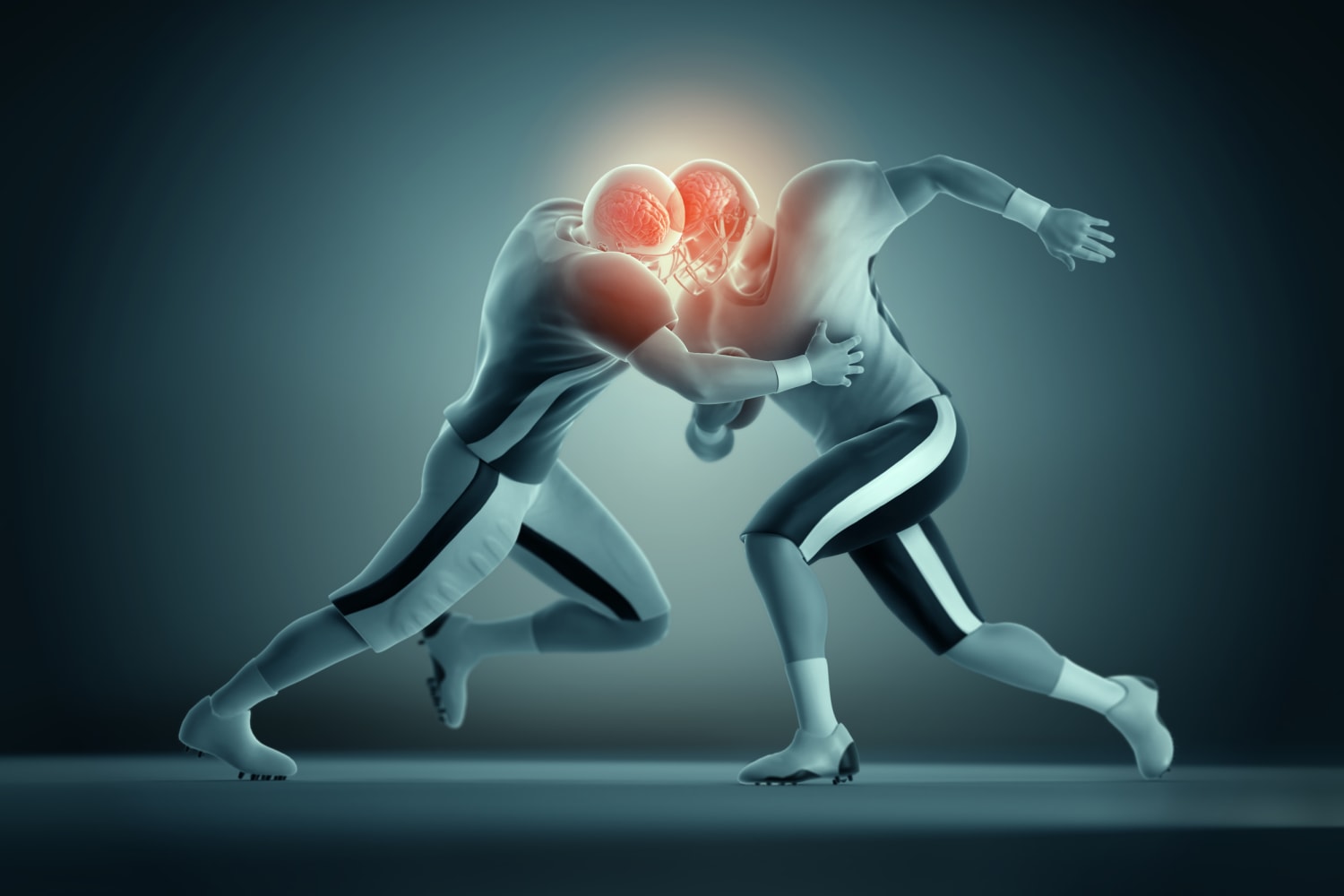
Study Limitations and Future Research Lines
Its main limitations are the difficulty in comparing its results with other injury-related studies. This may result from the significant difference in studies on key aspects like the definition of injury methodology used, the target population, the analysis of data and the variety of sports studied, and the variety of sports practices. The study has mainly been performed within one of the country's 17 regions. Therefore the results were not generalizable across 16 other regions. Future research will continue to capture sports injury epidemiological data using standard methods and measurement techniques.
Men's and women's sports vary in injury rates
(CDC — Collegesports. Statistics regarding injuries in sports show certain differences in the sports played. The injuries rate in tennis and a swimming pool are similar. Cross Country injuries have been comparatively higher amongst women, as well as a lower percentage in basketball, ice hockey, and lacrosse.
What sport has the most head injuries?
Completely supervised in concussion. You have numerous options for being injured by sports activities. However, the latest survey shows that men's rugby has the most concussive rates, with 2 concussions compared to 4 per 1,000 gameplay. Men's tackle football ranks second on 2.5 games per 1,000 while females ice hockey is third on 2.28 games per 1,000.
When it comes to death in sports, statistics show that water sports are as dangerous as traffic accidents
(Rushortha) According to a recent report, it is primarily caused by an increase in head injuries and neck injuries which can be due to penetration traumas that need surgery. Wakeboarding and water skiing can be particularly hazardous because they often result from concussions or sprained ankles. Surfing is no ordinary injury and the legs make up 46% of the injured person. The majority of these injuries are caused primarily by a poor selection of equipment, particularly for a surfboard.
Sports-related injuries:
-
Football related injuries
-
Concussions: Concussions are a type of traumatic brain injury that can occur from a blow to the head or a violent shaking of the head and upper body. They are particularly common in football due to the sport's physical nature and frequent collisions.
-
Sprains and strains: These injuries involve the overstretching or tearing of ligaments (sprains) or muscles and tendons (strains). Common examples in football include ankle sprains, hamstring strains, and groin strains.
-
ACL (anterior cruciate ligament) injuries: ACL injuries are common in football due to the sport's sudden stops, changes in direction, and jumping. These injuries involve damage to the ligament that stabilizes the knee joint and can range from mild sprains to complete tears.
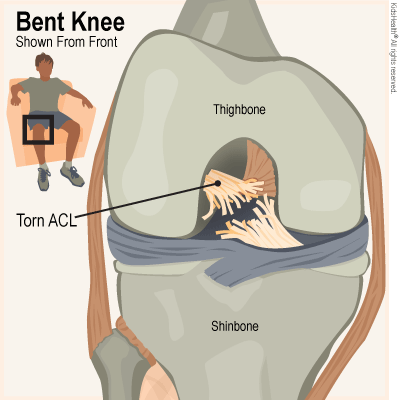
-
MCL (medial collateral ligament) injuries: MCL injuries result from direct blows to the outer side of the knee, which can occur during tackles in football. They involve damage to the ligament that stabilizes the inner side of the knee joint.
-
Meniscus tears: Meniscus injuries involve damage to the cartilage that cushions and stabilizes the knee joint. They can occur in football from sudden twisting motions or direct impact to the knee.
-
Fractures: Broken bones can occur from falls, collisions, or overuse in football. Common examples include wrist, forearm, collarbone, and rib fractures.
-
Dislocations: Dislocations in football often involve fingers, shoulders, and kneecaps. They occur when a bone slips out of its normal position in a joint, usually due to direct impact or extreme force.
-
Contusions (bruises): These injuries occur when a direct blow or impact causes blood vessels to rupture and blood to pool under the skin, resulting in a bruise. Contusions are common in football due to the sport's physical nature and frequent collisions.
-
Turf toe: Turf toe is a sprain of the main joint of the big toe, which can occur when the toe is forced into an upward position during a tackle or when pushing off the ground to run. It is more common on artificial turf surfaces.
-
Achilles tendon injuries: Achilles tendon injuries can range from mild inflammation (tendinitis) to complete ruptures. They can occur in football players due to the sport's explosive movements, rapid acceleration, and deceleration.
Top 7 Soccer related injuries:
-
Ankle sprains: Ankle sprains occur when the ankle is forced to move beyond its normal range of motion, causing ligaments to stretch or tear. They are common in soccer due to the sport's sudden changes in direction, running, and jumping.
-
ACL (anterior cruciate ligament) injuries: ACL injuries are common in soccer due to the sport's sudden stops, changes in direction, and jumping. These injuries involve damage to the ligament that stabilizes the knee joint and can range from mild sprains to complete tears.
-
MCL (medial collateral ligament) injuries: MCL injuries result from direct blows to the outer side of the knee or sudden twisting motions. They involve damage to the ligament that stabilizes the inner side of the knee joint.
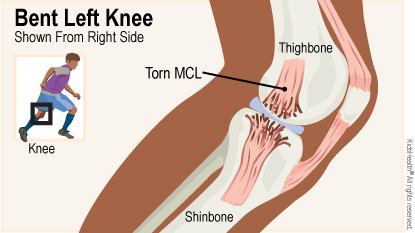
-
Meniscus tears: Meniscus injuries involve damage to the cartilage that cushions and stabilizes the knee joint. They can occur in soccer from sudden twisting motions or direct impact to the knee.
-
Hamstring strains: Hamstring strains occur when the muscles on the back of the thigh are overstretched or torn. They are common in soccer due to the sport's explosive movements and rapid acceleration.
-
Groin strains: Groin strains involve the overstretching or tearing of the muscles in the inner thigh. They are common in soccer due to the sport's sudden changes in direction and rapid acceleration.
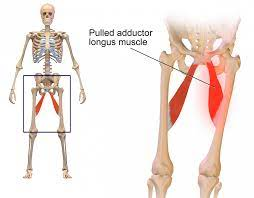
-
Quadriceps strains: Quadriceps strains occur when the muscles on the front of the thigh are overstretched or torn. They are common in soccer due to the sport's explosive movements, such as kicking and sprinting.
Top 5 Baseball related injuries
-
Rotator cuff injuries: The rotator cuff is a group of muscles and tendons that surround and stabilize the shoulder joint. Injuries to the rotator cuff can occur from the repetitive throwing motion in baseball, leading to inflammation, strains, or even tears in these muscles and tendons.
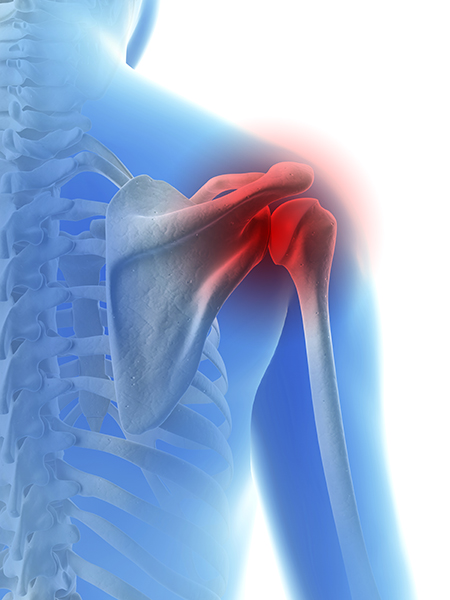
-
UCL (ulnar collateral ligament) injuries: UCL injuries, often referred to as "Tommy John injuries," involve damage to the ligament on the inner side of the elbow. These injuries are common among baseball pitchers due to the repetitive stress placed on the elbow during the throwing motion. UCL injuries can range from mild sprains to complete tears, with more severe cases sometimes requiring surgery.
-
Elbow tendinitis: Also known as "pitcher's elbow" or "thrower's elbow," this overuse injury involves inflammation and pain in the tendons surrounding the elbow joint. It is common among baseball players, particularly pitchers, due to the repetitive stress placed on the elbow during the throwing motion.
-
Hamstring strains: Hamstring strains occur when the muscles on the back of the thigh are overstretched or torn. They are common in baseball due to the sport's explosive movements, such as sprinting between bases and rapidly accelerating during fielding.
-
Ankle sprains: Ankle sprains occur when the ankle is forced to move beyond its normal range of motion, causing ligaments to stretch or tear. They are common in baseball due to the sport's sudden changes in direction, running, and jumping, such as when fielding or sliding into bases.
